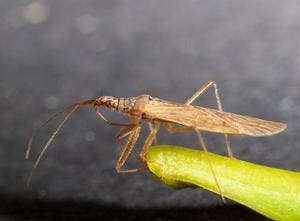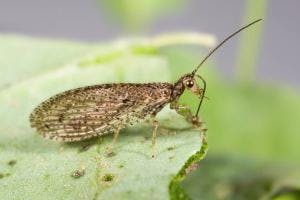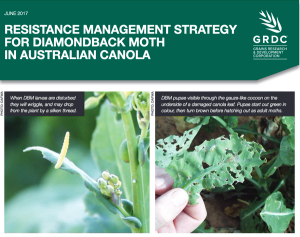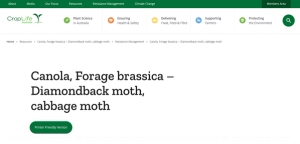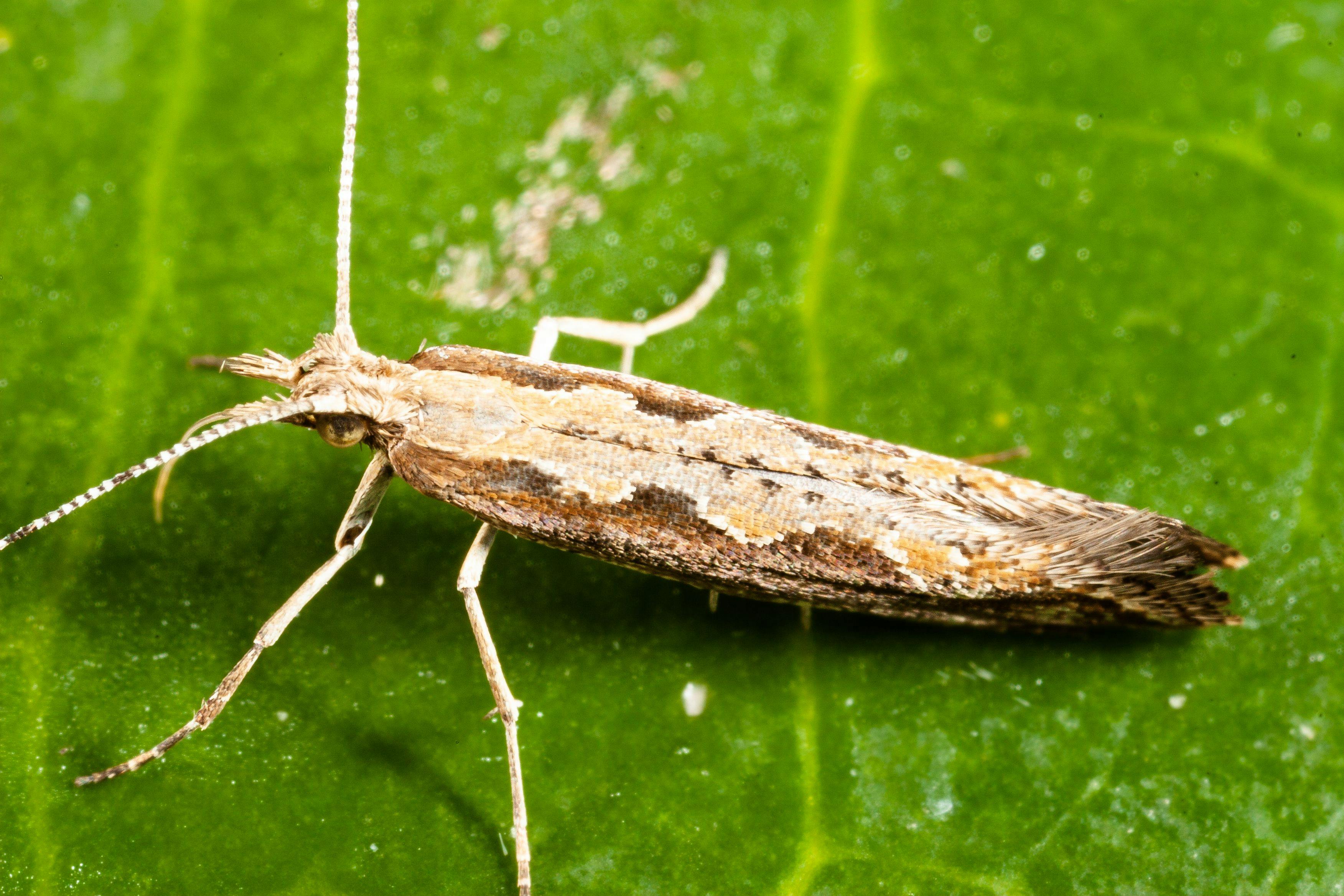
Diamondback moth
Plutella xylostella
Summary
The diamondback moth (Plutella xylostella) is a small (10mm), but notorious pest that poses a significant threat to cruciferous crops like cabbage, broccoli, cauliflower, and kale. With a wingspan of 15 to 20 mm, the adult moth displays a distinct diamond-shaped pattern on its wings, although it is more pronounced in males and less so in females. They also possess a unique beak-like mouthpart.
The moth's life cycle begins with pale yellow eggs, about 0.5 mm in length, which are laid individually or in small clusters along the veins or uneven leaf surfaces. After approximately 4 to 6 days, the eggs hatch, and during her 16-day lifespan, a female moth can produce an average of 150 eggs.
The larvae of the diamondback moth can be identified by their a pale green coloration and cylindrical body shape with tapered ends. During their second and third instar stages, they sport a dark head and sparse black hairs, with prolegs forming a noticeable "V" shape at the posterior end. When disturbed, these larvae demonstrate a unique defense mechanism, vigorously wiggling and dropping from the plant using a silken thread.
Initially, the larvae engage in leaf mining, creating tunnels within the leaf tissue. As they progress to their first or second instar, they transition to feeding on the undersides of leaves, causing irregular patches of damage while leaving the upper leaf epidermis intact. Severe infestations can lead to significant defoliation and subsequent yield reduction.
During the pupal stage, the larvae form fragile, white, open-mesh cocoons attached to the host plant. The duration of the diamondback moth's life cycle depends on temperature, with completion taking around 14 days at 28°C, but extending beyond 100 days at cooler temperatures of 12°C.
Damage potential, crop monitoring, and action thresholds
Chemical Management
Moderate to high-level resistance to synthetic pyrethroid (SP, Group 3A), organophosphate (OP, Group 1B), and carbamate (Group 1A) insecticides is prevalent across Australia. Furthermore, there is an observed increase in tolerance to emamectin benzoate (Group 6), spinetoram (Group 5), and diamides (Group 28). Currently, emamectin (e.g., Affirm®), spinetoram (e.g., Success Neo®), and the biological insecticide Bacillus thuringiensis (BtK) (e.g., Dipel®) remain effective for controlling diamondback moth in canola crops.
DBM develops insecticide resistance through repeated localized insecticide use, creating selection pressure. Summer-active brassicaceous plants in certain regions act as refuge habitats, enabling the persistence of insecticide-resistant DBM populations. The wide dispersal of DBM leads to similar resistance levels across canola-growing areas. Frequent use of specific insecticides increases the likelihood of resistance.
When spraying becomes necessary, it is important to follow the recommended Integrated Pest Management (IPM) or Recommended Management Strategy (RMS) spray windows. This includes
- Adhere to all label directions and harvest withholding periods.
- Opt for selective chemistries to protect beneficial insects.
- Apply sprays accurately with appropriate droplet sizes for thorough coverage.
- When outbreaks occur consecutively, avoid using the same product as the previous year.
Resistance
Biological Management
The primary beneficial insects for diamondback moth control are small parasitic wasps such as Diadegma semiclausum, Apanteles ippeus, and Diadromus collaris. Diadegma are available to purchase for release in higher value brassicas.
Other generalist predators like brown lacewings, spiders, and damsel bugs also contribute to pest suppression.
Under specific conditions (rainfall, high humidity, and warm temperatures), naturally occurring fungal diseases can play a significant role. Bacillus thuringiensis (Bt) is an effective insecticide for diamondback moth control and has minimal impact on natural enemies. To maximize its efficacy, apply Bt late in the day or early evening to minimize UV breakdown, and ensure it is applied within 2 hours of mixing.
Natural Enemies
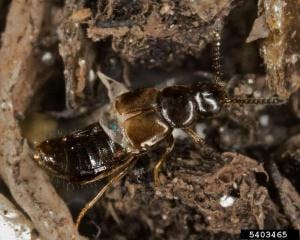
Rove beetles
Family: Staphylinidae
Moderate efficacy
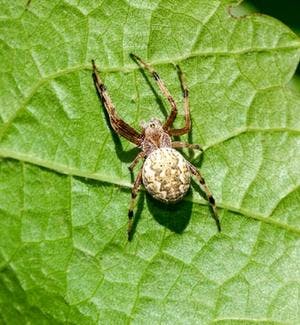
Spiders
Order: Araneae
Moderate efficacy
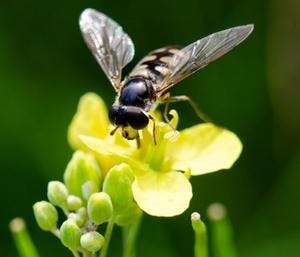
Hoverflies
Syrphidae sp.
Moderate efficacy
Cultural Management
Regular monitoring, including the use of pheromone traps, aids in detecting moth populations and determining the need for control measures.
These practices focus on disrupting the moth's lifecycle and reducing their population.
- Crop rotation breaks the moths' breeding patterns by rotating susceptible crops with non-host crops.
- Proper sanitation and field hygiene eliminate potential breeding sites and remove crop residues.
- Adjusting planting and harvesting schedules helps to minimize vulnerability to infestations.
Resources
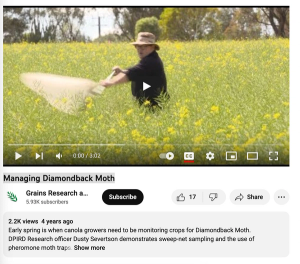
Managing Diamondback Moth
Management
Identification
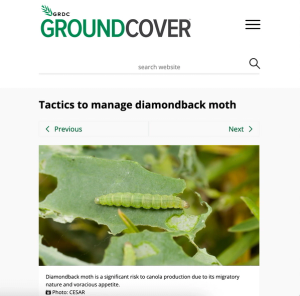
Tactics to manage diamondback moth
Management
Resistance monitoring
GRDC
